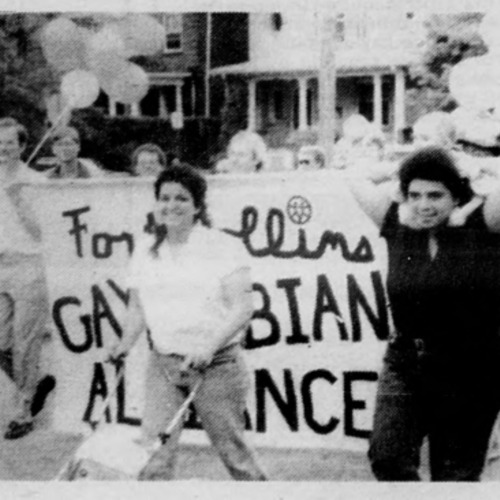
Welcome to Colorado State University’s new podcast, The Audit, featuring conversations with CSU faculty on everything from research to current events. Just as auditing a class provides a fun way to explore a new subject or field, The Audit allows listeners to explore the latest works from the experts at CSU.
So, I want to start with the story behind this project. How did the idea for it come about?
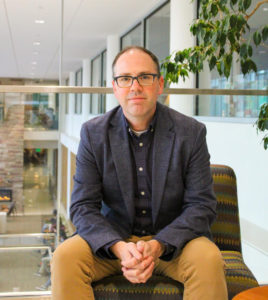
It’s a great question. This project came about somewhat by accident, as it turns out. I was lucky enough to be awarded a Montfort Professor Award in 2020, and at the time it was geared towards a big international research project, which is where a lot of my research has been previously. But when the pandemic struck in March 2020, we really had to change it up. So, we decided to think about how to take the lessons of these big, broad, international and national LGBTQ research projects and make them hyperlocal. How do we use the community here in Northern Colorado as a resource and give back to the community in doing that? Drawing on existing research and other models of these kind of projects that we see in big cities like New York and San Francisco and thinking about them in a really local context here in Northern Colorado.
Why are areas that are more rural or suburban less likely to have good historical resources of their LGBTQ communities than their urban counterparts?
Rural areas and areas outside of big coastal centers don’t usually undertake this kind of project. Even college towns are not necessarily well resourced to do that. That’s one part of it. Resources is always an issue here, making sure that there are people who are willing to put in money and time and energy to do this work. And we were really lucky to have that.
Another reason, though, is that many of these stories take place in those parts of the country and yet for a very long time, people didn’t feel safe in telling those stories. They didn’t feel welcome or invited to tell those stories unless there was a really explicit invitation to do so. That’s true in liberal enclaves and in big cities, as well. But it’s particularly true in places like Northern Colorado that tend to be very agriculturally based, that tend to be very rural, and where we don’t think of LGBTQ life as being rich and complex. But it is. These stories show that in a number of different ways. So those two tensions are certainly important there. But one of the things we found is that there’s a lot of stories to tell, and it’s really about building relationships and building trust with people and getting those stories out so other people can see them.
What kinds of archival documents have you found?
At the beginning of the project, we really wanted to just do a gut check, which was to say, ‘Okay, let’s see if there’s stuff out there that would be useful for building the foundation of a project like this.’ We didn’t want to get too far down that road without doing some initial research to see what we could find. The online archive that we currently have is the result of that
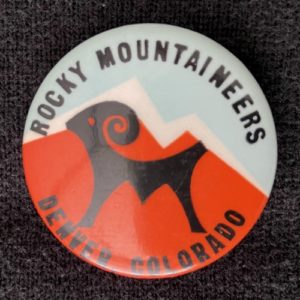
initial search. A lot of that work was done during the pandemic, and a lot of that is based upon some work that I did in online archives, library resources going through in a piecemeal way some of the resources that were out there. And those are both local archives here, but also big, national archives that had online resources like the LGBTQ archive in California is a really good, important resource that we use. Cornell also has some great resources.
What we did in the class here at CSU in the spring of 2022 is try to do that work similarly in a much more thoughtful way, and to bring a bunch of students into the process and to therefore identify specific newspapers, specific archives that were likely or expected to have some of this information in them about Northern Colorado and assign students responsibility for particular pieces of that puzzle to say, ‘You’re going to be in charge of looking at what’s published in The Coloradoan between 1960 and 1965. Doing searches for the terms ‘homosexual,’ ‘sodomy,’ ‘crimes against nature’ — historical terminology that would indicate LGBTQ content that you’re not likely to find otherwise. So, we did that in a collaborative way, and the students produced some really great information from the start that’s now the foundation upon which we do a lot of the work in the project.
Now, you’re going to be doing a lot of outreach this month as part of Pride Month at various events to collect oral histories, but you’ve already begun collecting these stories. Could you share a couple of them with us?
We’ve been lucky to find an embarrassment of riches in that regard, and one of the values that we set out in the project from the beginning was to say that we didn’t want to self-censor thinking about those stories. We wanted to make sure that we were intentional and struck a balance between giving space and time to stories that made us both proud and happy about what we found, but also to recognize and do justice for folks who had a bad experience here in Northern Colorado and whose stories are more likely to be told because they end up being about criminal behavior or they end up being about persecution or violence.
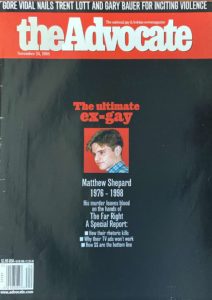
The image is the property of the Queer Memory Project. The magazine itself is in private collection.
One of the ones that really resonated with our students that we came across in the class was the story of Thomas John Peters, who was an education student here at CSU in 1967. He was murdered in Denver but it wasn’t until the trial that the prosecutors explained that he had been murdered because he was a — the term they used was ‘homosexual’ — but a gay man. He was a known homosexual. And the juveniles that he was with figured that out and murdered him for that. And so that is a really sad story that didn’t get a lot of attention then, and it really hasn’t gotten a lot of attention since. There was a little bit of time spent on that in the aftermath of the Matthew Shepard murder in Laramie, Wyoming, in 1998. But even then, that story really hasn’t been told. And so that’s been meaningful to our students to know that there are students on this campus who’ve identified in different ways as part of the LGBTQ community who have faced that level of persecution. Granted, it was 55 years ago at this point, but that’s still real and that still mattered.
But there’s good stories, too, and that’s also been important. One that we only just have a snippet of that I really love is a report in The Coloradoan from 1974 of two young women who go to the Larimer County Clerk’s office and inquire whether they can get a marriage license. And the clerk’s office being just a little befuddled by that, writes it off as it’s a joke, that these girls are just trying to cause trouble, or maybe they’re doing research for a class. But they don’t actually talk about it in a recorded place like a newspaper until a year later, when the Boulder County Clerk’s office starts issuing marriage licenses to same sex couples for a time. And so, we know a lot about that Boulder part of the story, but we don’t hear that that was a thing that had happened in Larimer County a year earlier, and maybe we shouldn’t write that off as a joke. Maybe we should think about that as potentially a real thing that happened.
Did they actually get a license?
It’s one of the stories that we have very little firsthand information on. But what we do know is that after making this inquiry, they didn’t get the license and no marriage licenses to same sex couples were given that we know of until well after the same sex marriage movement of the 21st century. We do believe that they were referred to a lawyer’s office that told them to talk to a lawyer if this is something they’re interested in because they couldn’t help. But we also know that a year later, once the Boulder County Clerk’s office starts issuing those licenses, reporters start asking the Larimer County Clerk if they’re going to do this, too. And the answer was a firm no. It was interesting in that it was not couched in a particular discrimination. It wasn’t a hostile ‘No,’ but it was a, ‘This isn’t something we think we have the power to do. We will refer people to other counties.’ And so, the expectation is that if somebody came to Larimer County, they would send them down to Boulder.
The last story I’ll share — just because our students regularly love this story and this is a great one that came to us from talking to people in the community — is the story of Theron Abbott, which I think some people here on campus know. In 1974 Abbott, a male graduate student in political science, was elected homecoming queen of Colorado State University. That was an unusual thing at that point in time, and it was a very political move, I think, on Abbott’s part. He ran on the slogan, ‘Kick the sexist habit, vote for Theron Abbott!’ But he won and he won overwhelmingly. He beat out 10 women candidates to be elected the queen of homecoming for Colorado State University, and it created quite a ruckus, including some national headlines that were not particularly forgiving. The University ended the homecoming queen tradition after that because it was so controversial. And yet it’s something that I think today speaks so much to our students, speaks so much to the wider community about the role of gender, about the construction of gender, about the importance of people crossing those lines and being who they are and living their life authentically.
There’s great stories like that that we’ve uncovered, and that people know, but that I think a lot of people in Northern Colorado and on the CSU campus just haven’t had the chance to hear about. We want to share those with people.
Have there been any stories that were really surprising to you, so far?
I think one that that surprises me a little bit is just the sheer number of times that LGBTQ rights ordinances in Fort Collins, in particular, were put up and then soundly voted down. I think a lot of us are aware that that happened in a fairly spectacular way in 1998, a few weeks after Matthew Shepard was murdered. And that struck sort of a national headline that there was a popular decision to not protect LGBTQ people in the city that Matthew Shepard died in. But that was only the most recent time; it happened two or three times before that, going back decades earlier. I think it’s surprising to many people to see just the regular attempts to try to protect LGBTQ people from discrimination in this part of the state and certainly in this city, and to see that push back and to see that rejected over and over again. In some ways it’s surprising just how persistent the advocates were. But it’s also surprising to many people to know that there’s a pattern there and it’s not a once off.
Some of the things that I think are more surprising are just the fun things we learned. We recently did an interview where we asked what was the most common way that lesbians in this context would meet each other, let’s say, in the early 1980s. And the person shared that one of the ways that they found a lot of the dating scene was around moving, when people had to move either at the end of the semester or out of the from one place to another, either because a relationship ended, or a new relationship started. They would usually bring a group of other self-identified lesbians together to help move things, and that became a social event. The person that we were talking to shared how that was a really meaningful way that LGBTQ social life took place for a period of time in this part of the state. And it’s something that would never have occurred to me. But that’s why you have to talk to people, and that’s why you have to ask.
What kind of reactions are you getting when you ask people to tell their stories?
It’s a humbling experience to get to, to talk to LGBTQ people but particularly LGBTQ elders, people in their 60s, 70s and 80s, about these kinds
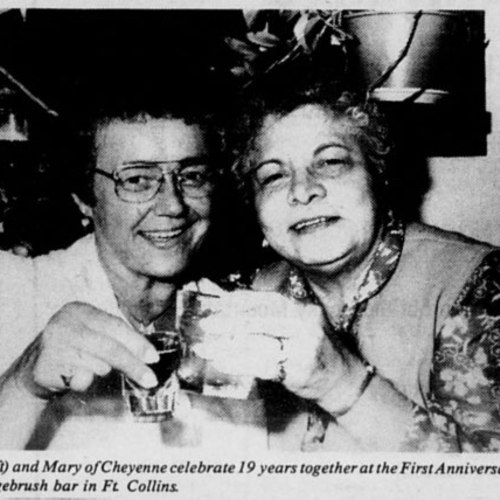
of experiences. The reactions vary. I mean, across the board, the reactions of people we’ve talked to so far have been really positive. Most of the people that are asked to participate in the project are very excited to talk to us, which has been great and a great honor for us that they’re willing to share those stories. Sometimes there’s a very genuine questioning of, ‘Is my story important? Why would you want to talk to me?’ And in some ways, that’s a reflection of the larger culture not being interested in, for a long time, hearing these stories. And I think sometimes people internalize that. I get to tell them, ‘We’re very excited to talk to you. We’re very excited to hear about, not just the big and important things that you lived through, but your day-to-day life. What was just going out for a coffee like as a same sex couple in Northern Colorado in 1985? What did that look like?’ It’s not unusual that we have people who end up in tears at some point in these interviews — sometimes out of joy, but a lot of times out of sadness, either talking about people who they lost or horrible experiences that they had.
There’s been a real vulnerability in these interviews where people have recognized that this is a chance to set the record the way that they want it set. People have leaned into that in ways that bring the emotions to the surface.
But my favorite reaction — and I think the one that we get the most — is just real pride. People in this part of the state, particularly people who’ve lived here for a long time and are LGBTQ-identified, are proud of the space that they made for themselves in a community that wasn’t always open, wasn’t always accepting. They did things that they know mattered, and they know that the more LGBTQ, inclusive community that we live in now only exists because of some of the things that they did. So, there’s real pride there, not in a boastful kind of way, but a real deep appreciation that after many decades, they are being seen for who they are.
This project isn’t just about giving the older generations a place to share their stories. Can you tell me a little bit more about the impact that you’re hoping it will have?
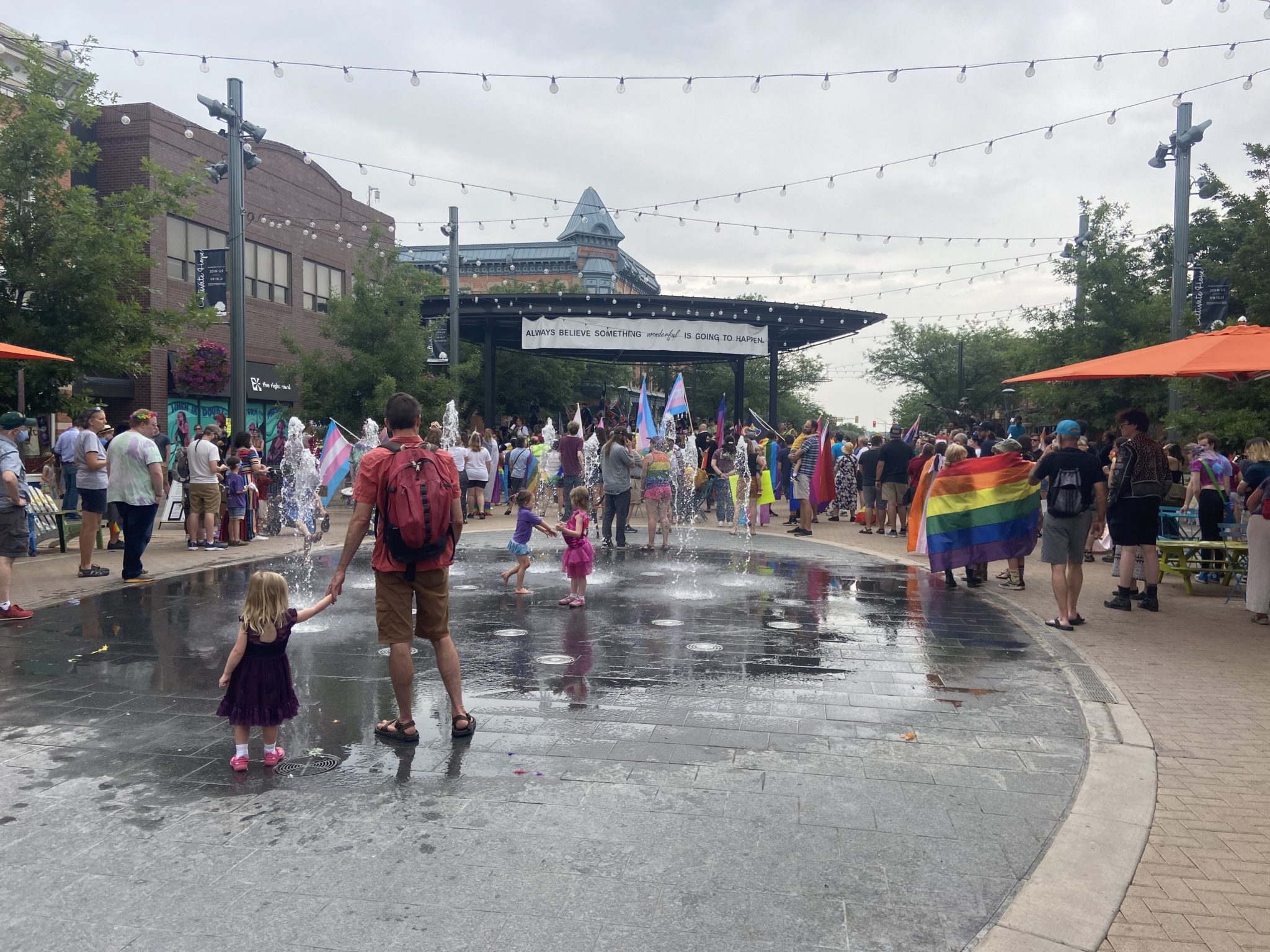
One of the target audiences of this work is LGBTQ youth. My background in training is as a communication studies faculty member and researcher, and so I’m always thinking about the audience. Not just the creation of messages or the doing of research, but who’s it for, who does it serve, and what do we try to change with the time and energy that we spend uncovering these things.
And so, LGBTQ youth from the beginning has always been an important audience for this project. That was particularly true when we started during the pandemic because it was very clear, not just here in Northern Colorado, but elsewhere, that LGBTQ youths’ ability to see themselves, to talk to other people like themselves, to be in supportive environments, was greatly curtailed by the pandemic because everything was greatly curtailed by the pandemic. There were some real worries about LGBTQ youth at that time.
So, we thought, ‘Maybe this is an online resource that we could start to develop that might make a local intervention to help some of those folks.’ But it’s also about the broader national conversation that’s going on here as well. It’s a really hard time to be a LGBTQ young person in this country. That’s been true for a long time, but it’s particularly on the edge right now where politics is very much addressing that. And there’s a lot of measures in different places that are seeking to limit or minimize our ability to tell these kinds of stories to exactly the kind of people who need it.
LGBTQ youth really need to be affirmed. They need to be represented. They need to see themselves. The Queer Memory Project argues that they need to be able to see themselves and the community in which they already live.
It’s wonderful that our local schools can talk to and point to what Harvey Milk did in San Francisco in the 1970s. But that feels like a story about somebody far away who did something important. And sometimes the message of that is if you want to live this way and be who you really are, you need to leave here and you need to go somewhere else to live that life. And implicitly, the work that we’re doing is to say those people have always been here, too, and they’ve built lives for themselves here, and they enrich our community and make our community a better place, both on campus and off. A lot of this is really geared towards giving support and giving messages and giving representation to LGBTQ young people who aren’t always getting that and particularly are not getting that close to home.
You’re now two years into this effort. What’s next for the project?
Yeah, it’s a little surprising to be two years into the project. The time flies when you’re having fun and there’s lots of important work to do still, which is both an honor and a little scary because there’s so much story to tell here. This summer, we’re occupying our time with doing oral history interviews, so sitting down and having conversations with LGBTQ people from northern Colorado who have some in some cases who’ve lived here their entire lives, and in other cases people who were here for a time and maybe left or came back in some circumstances and trying to uncover the stories and history that’s only known to the people who lived those lives, the kind of things that aren’t going to be in a newspaper or an archive somewhere. So that’s really where we’re focusing our time right now, and that will keep us quite busy and we’re all going to spend some time at Pride events and in the public eye this summer, both to share

those stories, but also to hopefully encourage more people to come and share those stories with us so we can document them and record them. But then the next step of the project after that is two parts. One is to take that information and then to read it back into the existing work that we’ve done up till now, including building a timeline of LGBTQ history in Northern Colorado, writing some blog posts that will go into production about particular people and events. They’re all wonderful, and yet they really need that extra context of what did people who lived through these experiences say, and in some cases, they might tell us a very different story. And it’s going to radically change what that final presentation of that information looks like. So, using that information both to preserve those stories, but then also to inform some of that. And then the very last part of this project, which has always been the goal from the beginning, is to focus on how do we share these stories in compelling ways? How do we get these stories out to people so that they know broadly that there’s an LGBTQ history to this part of the state in the country that they should be proud of and they should know about, but also to know some of those specifics and to know those names and those individuals. And so, we’ll be doing a lot of that in October, which is LGBTQ History Month, with some programing both here on campus and off. We are doing a social media campaign which shares some of this information, which will be largely student led. A lot of this will go into Pride Month next year as well too. So, Pride 2023. And we also do a lot of community partner work. So, partnering with LGBTQ organizations both in the state and in the region, as well as folks in the city of Fort Collins and elsewhere who are just interested in learning more about this history and making it a part of a broader conversation. And so that communication part of the project is really where we’re going to be leaning in in the next couple of months. My hope is personally that by the end of 2023, we’ve done a really good job doing all of that and we’ve recorded some important, meaningful parts of that past so that there’s no LGBTQ kid who walks into a library in Northern Colorado and gets an answer to say, oh no, we don’t have anything like that. They’ll know that those resources are there, and they have them. We’ll see what comes from that. There might be a need to do more of this work, and I think that would be exciting to do. But regardless of what shape it takes, my focus is always going to be on creating a space to tell these stories, both here locally, but also in a broader national and international context. I really believe that the LGBTQ past is a great resource, and it’s not just a resource for writing history books. It’s a resource for thinking about who we want to be as a country, who we want to be as parents, who we want to be for our kids. And it’s going to be essential that we know that path to be able to be a good, productive and inclusive society in the 21st century.
About The Audit
Colorado State University’s new podcast, The Audit, features conversations with CSU faculty on everything from research to current events. Just as auditing a class provides a fun way to explore a new subject or field, The Audit allows listeners to explore the latest works from the experts at CSU.